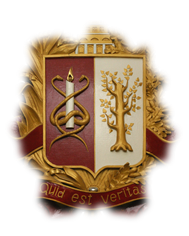Issue: 2024, Vol. 29, No. 1
EXPERIENCE IN THE USE OF INTERSTITIAL ELECTRICAL STIMULATION IN THE TREATMENT FOR VERTEBROGENIC CEPHALALGIA IN PATIENTS AGED 15-17 YEARS
- Keywords
- vertebrogenic pain syndrome, interstitial electrical stimulation by Gerassimov’s method, cephalalgia
- Abstarct
- Objective – to study the effectiveness of the use of interstitial electrical stimulation in complex treatment for vertebrogenic cephalalgia in adolescents. Material and methods. The study was conducted at the clinical trial centers of the departments of Traumatology and Orthopedics (Ural State Medical University and Tyumen State Medical University). 45 patients aged 15–17 years diagnosed with “cervical osteochondrosis” (cipher in International classification of diseases 10 – М24.1, М24.2) which manifested itself as a headache and a decrease in mental and physical performance were enrolled in the study. Objective control of pain intensity was carried out by measuring the electrical potential of the skin by A.A. Gerassimov’s method and by calculation of the asymmetry coefficient (AC). AC normally is amounting to 0,8–1,2, rising in the presence of pain. Test tasks with viewing letter row and crossing out characters were used in order to estimate mental performance; these tasks allowed to evaluate qualitative parameters of mental work of the examined patients. All patients were treated according with current Clinical recommendations; 22 adolescents were also administered interstitial electrical stimulation (ISES) by A.A. Gerassimov’s method (the main group). The other 23 teenagers composed the control group. Results and discussion. The intensity of pain syndrome upon visual analogue scale (VAS) and skin electrometry data before treatment did not differ statistically, AC after treatment in the main group decreased (from 2,99 ± 0,21 to 1,14 ± 0,05, р< 0,01) and was lower than in the comparison group (1,40 ± 0,18, р < 0,05). Pain syndrome in the patients of the main group was stopped during the first week, in the control group – on the 10–14-й day. Trustworthy differences in mental performance parameters in the groups both initially and against the background of treatment were not revealed. Conclusion. ISES usage in the treatment for headache in adolescents allowed to stop pain syndrome effectively (in a shorter time and with greater efficiency in comparison with the control group), but did not affect the productivity of mental work.


 vestnik1_2024-29-34
vestnik1_2024-29-34